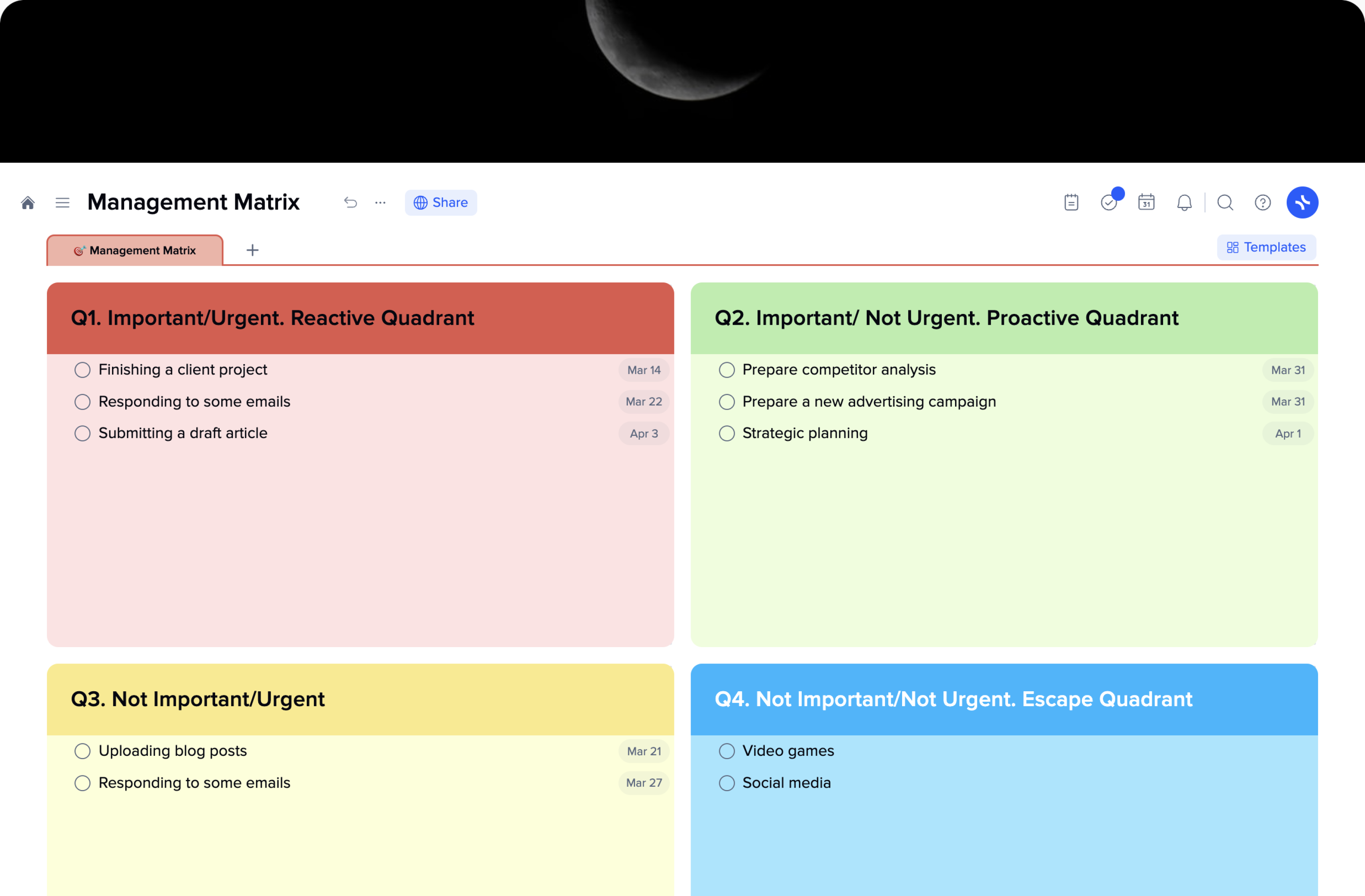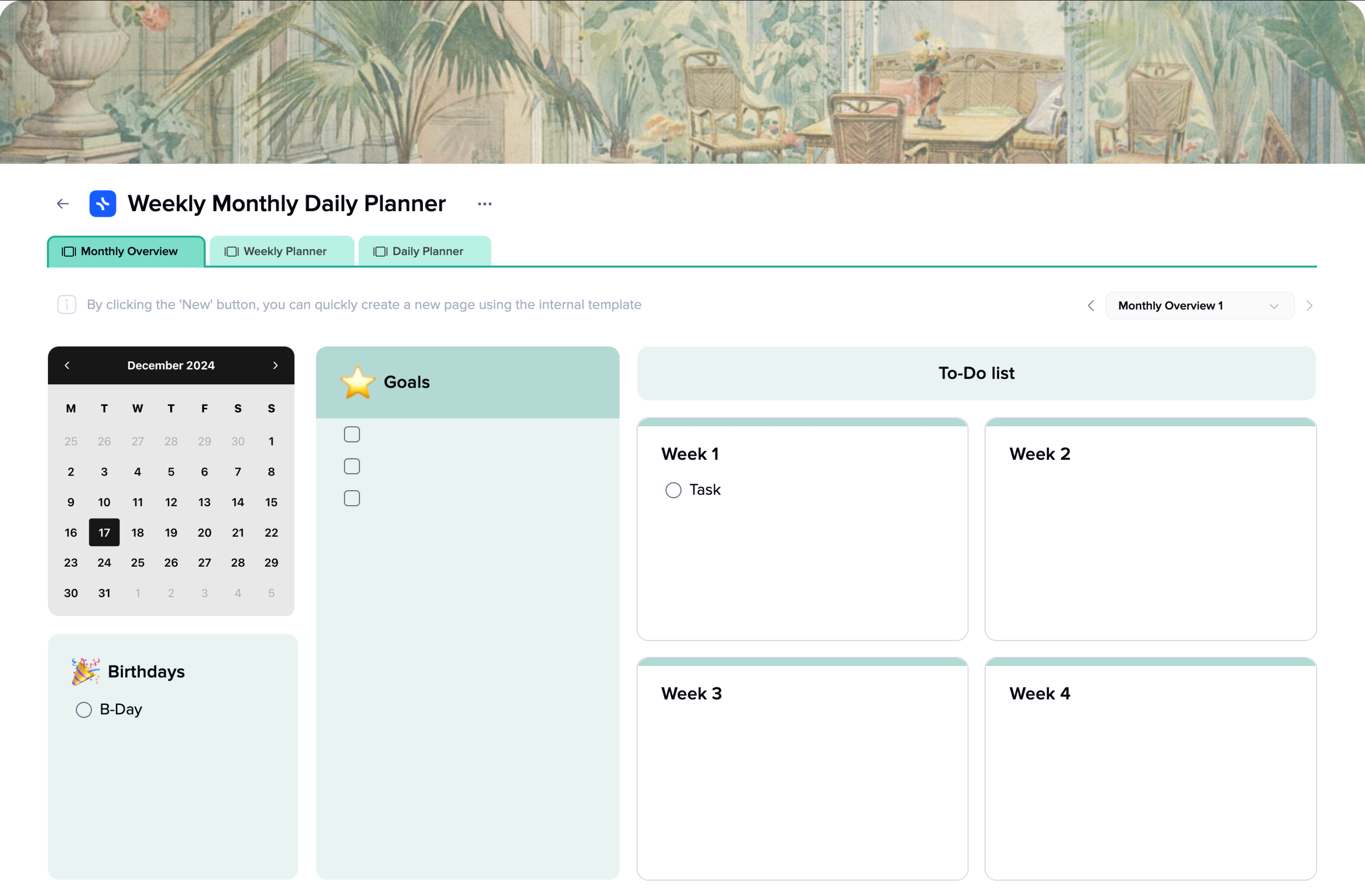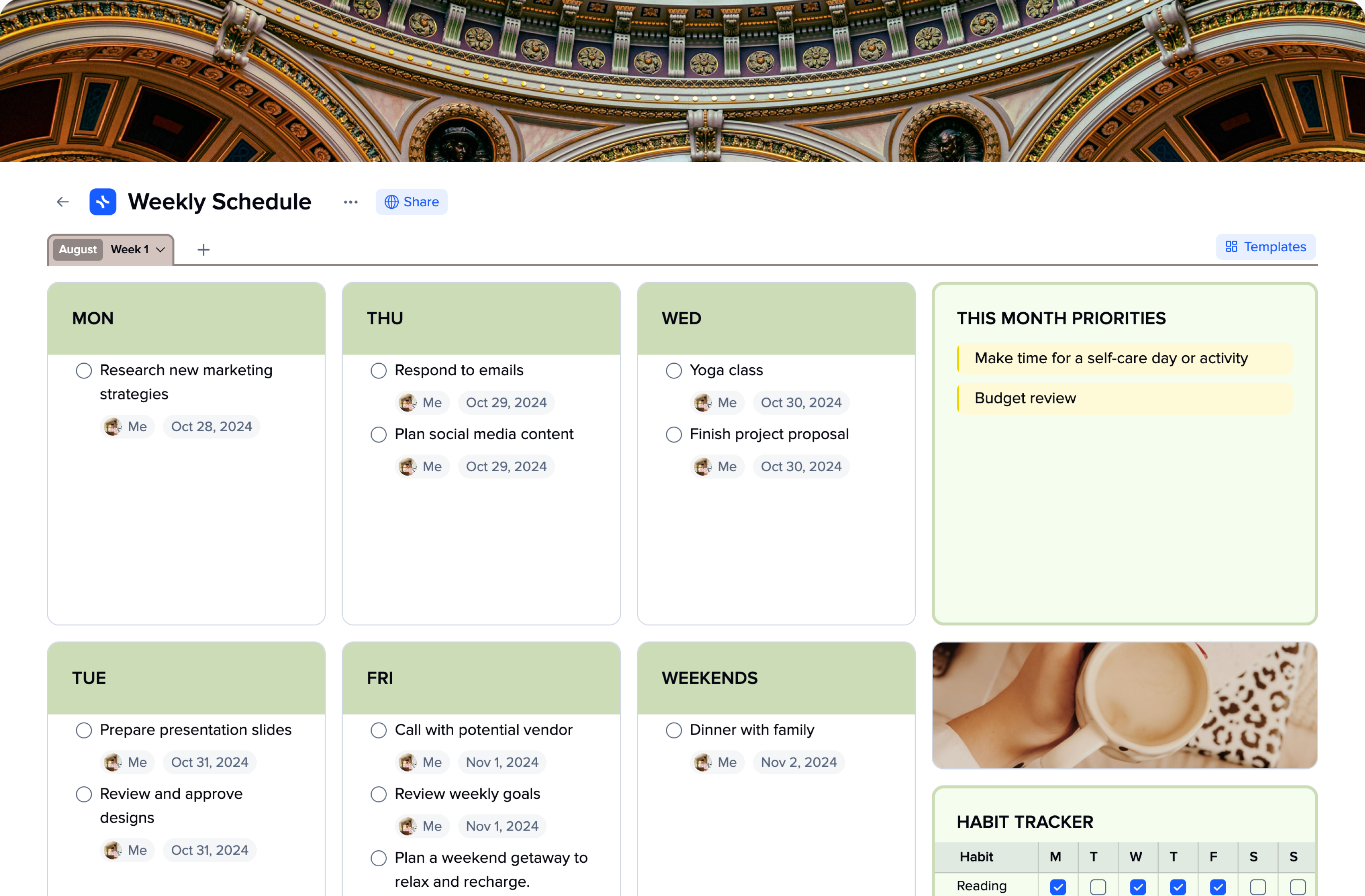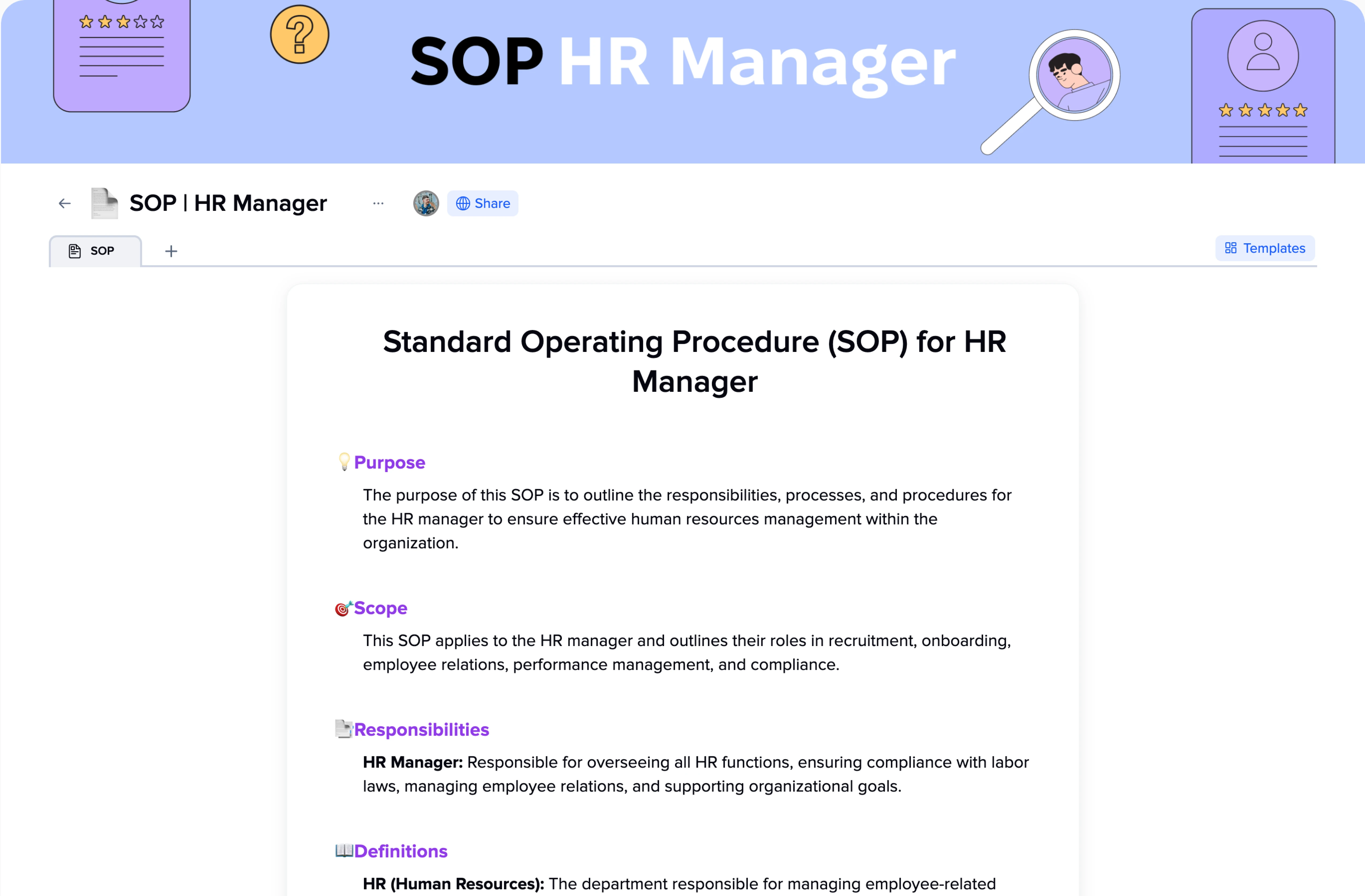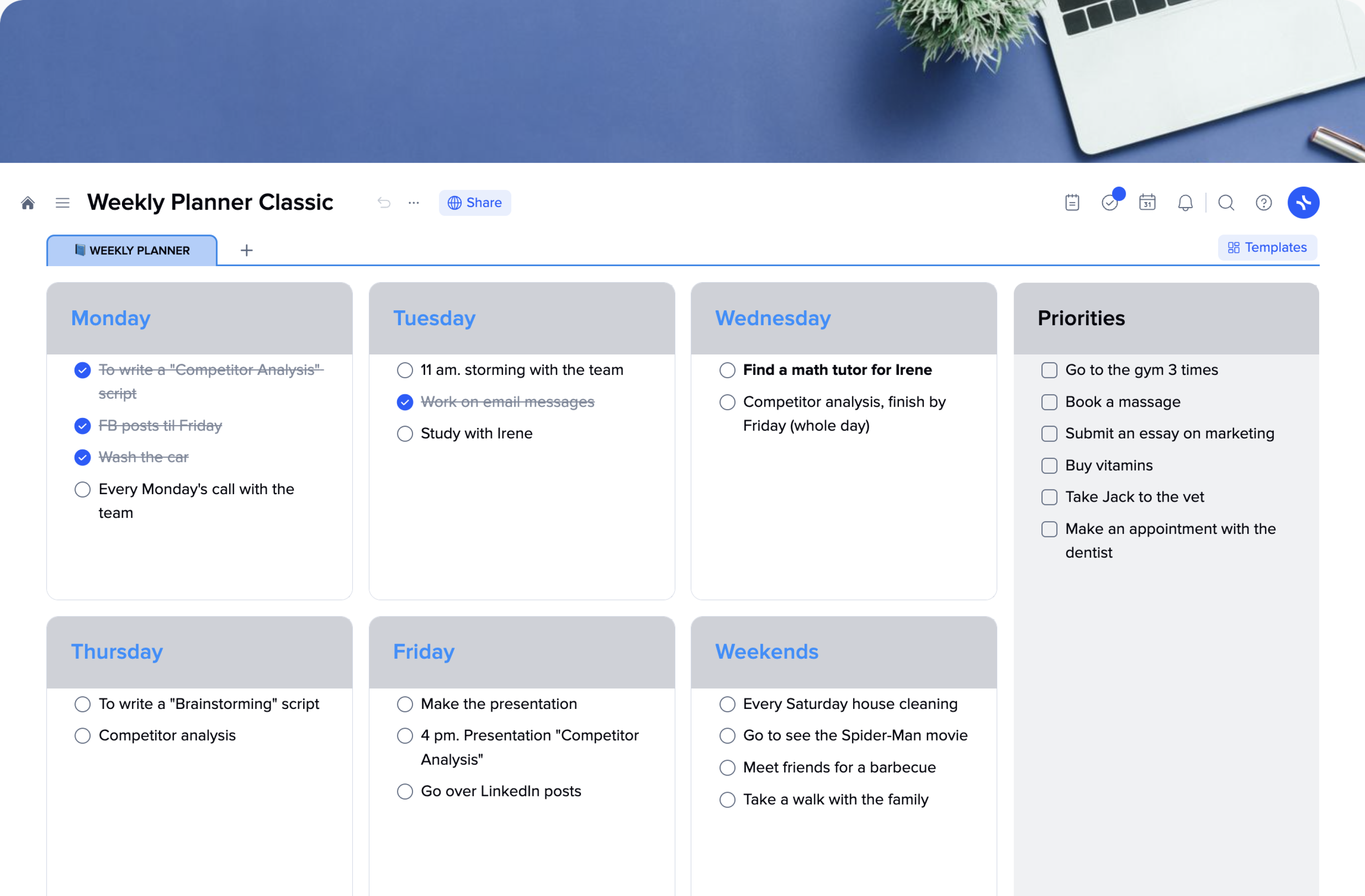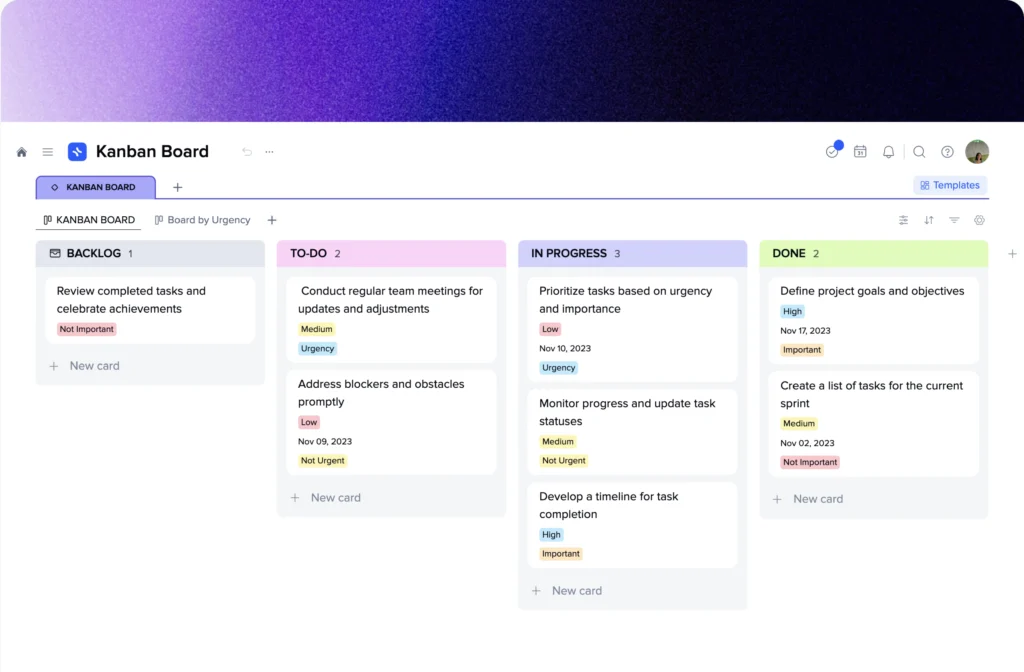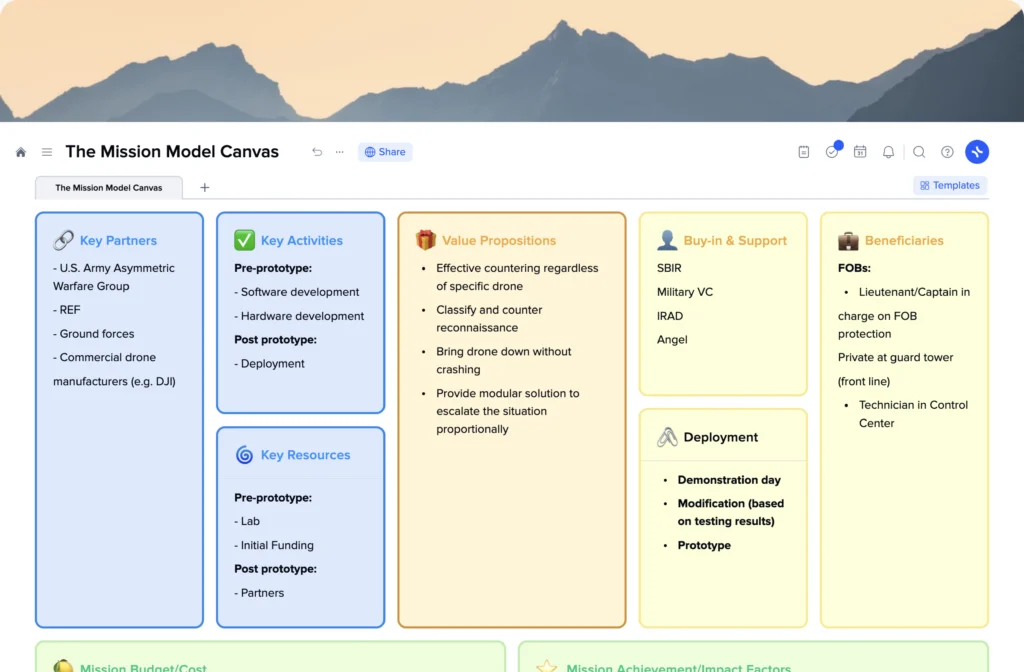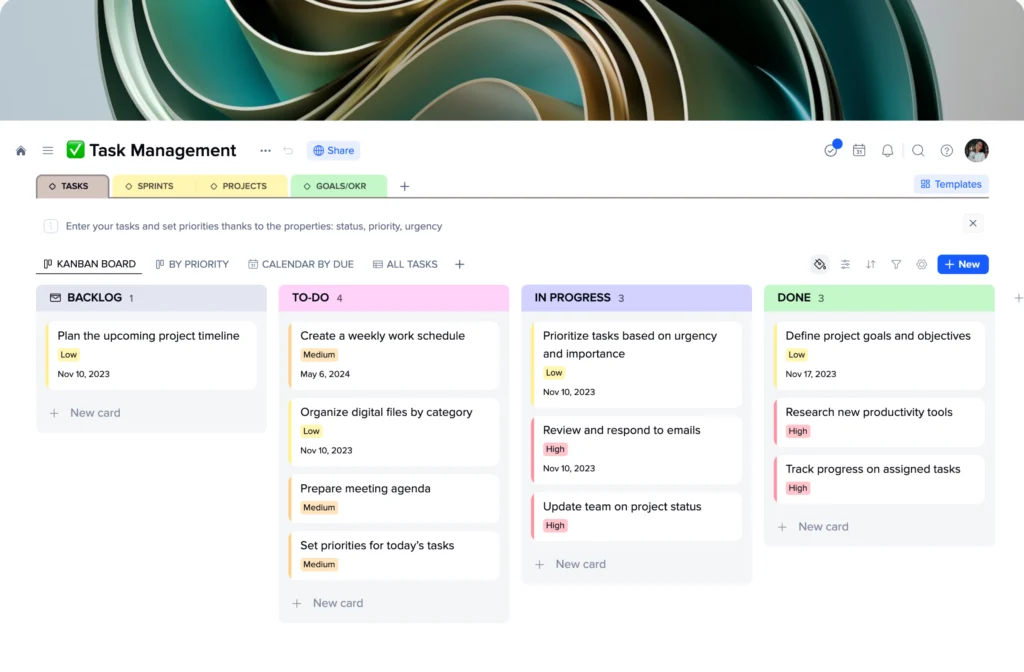How to create your time management matrix using the xTiles Time Management Matrix Template?
The structure of a time management matrix is easy. There are only four sections to divide your tasks between. However, to make it workable, you need to understand each quadrant correctly and put only relevant data.
That’s why the best guide on creating your time management matrix is a short description of every quadrant and its purpose.
Additionally, below, you will find a few tips on how to manage your matrix to get maximum profit out of it.
The first quadrant
The first quadrant of the time management matrix is for urgent and important tasks only. These tasks span various categories and require prompt attention to avoid significant consequences. However, when following your time management matrix, you need to stay flexible to effectively manage situations that arise suddenly and never weren’t planned in the first place.
Let’s imagine you calmly conduct an important meeting in your office. You and your teams are having a brainstorming session. Then, out of the blue, you hear an alarming sound of a fire alarm. What would you choose to prioritize at that moment? This situation calls for a decisive assessment of what is truly important and urgent. Or imagine you’re in the same meeting, there never was any kind of fire in the building, but instead, you get a message from your partner asking where their phone charger is. Will you interrupt the meeting to answer them?
The example is just to demonstrate that your urgent tasks might be interrupted by different situations, and you need to be able to decide what is urgent at the moment.
In emergencies like a fire alarm, it becomes crucial to allocate your attention and efforts to address the immediate crisis over other tasks, such as the ongoing meeting. While the meeting can be rescheduled for a later time, the fire demands immediate action as its spread could lead to severe consequences.
The second quadrant
The second quadrant of the time management matrix is dedicated to important tasks and activities that align with your long-term goals. These tasks require careful long-term planning to ensure progress toward achieving your desired outcomes within a specific timeframe. And no fire alarm or message will have power over them.
For instance, if you are working on a project that doesn’t have a tight deadline, you can establish a time frame, such as one year or six months, taking into consideration your current abilities. Sometimes, tasks that have no strict deadline date might give a false sense of relaxation, like there’s nothing to do at all, like you can start doing that later because there is plenty of time ahead of you. Such an approach will reinforce your procrastination leading you to nowhere. The time management matrix will help to prevent that, keeping you dedicated to delivering your project or getting your goal achieved on time.
With a certain time frame in mind, you can plan your project using monthly Gantt charts, weekly planners, or create daily to-do lists, if you prefer to plan small. While you may not have strict deadlines for each task, having a defined time frame provides structure and accountability, keeps you focused on what you need to do, and helps you escape procrastination.
The second quadrant may also encompass activities related to maintaining your health, such as regular exercise, walks, and nurturing relationships.
By organizing and allocating time for these important tasks within the second quadrant, you can actively work towards your long-term goals while maintaining a balanced approach to your overall well-being.
The third quadrant
The third quadrant is dedicated to tasks that are urgent but not important. Not all important tasks contribute significantly to your long-term goals or priorities, yet they still need to be done on time, and they need their special place on your time management matrix in order to be completed according to their importance and urgency.
For instance, activities like paying utility bills or taxes may be urgent regarding meeting deadlines and overall well-being, but they do not impact your personal or professional growth.
Identifying these urgent but unimportant tasks is crucial for managing your time effectively. Sometimes they accidentally end up in the first or second quadrants, which might mislead us or spoil the whole matrix, making it unworkable.
When you define your tasks correctly, it’s much easier to stay focused on tasks that align with your priorities and contribute to your overall success.
Tasks from this section can usually be delegated to someone else with no harm to the result.
The fourth quadrant
Quadrant four of the time management matrix encompasses activities that are generally time-wasters, yet we often engage in them because we’re all humans, after all. These activities are part of our daily lives, such as scrolling through social media endlessly, watching TV, or playing games.
While stopping binge-watching funny videos with dogs or playing our favorite computer game may not be feasible, we can classify them within quadrant four and strive to minimize the time spent in this quadrant.
Sometimes putting these activities into the section of the lowest importance is enough to help us to classify them as time-wasters, and the time we spend on them will decrease without any significant effort, which will help us regain control over our time and prioritize more important and meaningful tasks.
It’s crucial to understand that having your tasks divided into four doesn’t mean you need to divide your time evenly among all the quadrants. By minimizing our time in quadrant four, we can maximize productivity and allocate our energy towards activities that contribute to personal growth, professional development, and overall fulfillment.

